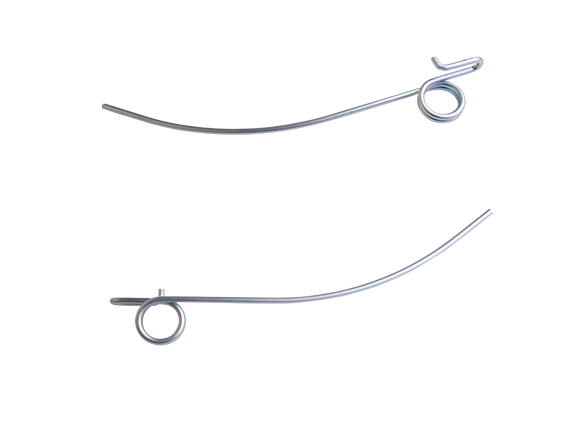Features of Harvester Spring Finger
2024-07-19
A harvester spring finger, also known simply as a spring finger or crop lifter, is a specialized component used in harvesting machinery, particularly in combines or harvesters. Here’s an overview of its features, function, applications, and considerations:
Features of Harvester Spring Finger:
1. Material:
- Typically made from durable materials such as hardened steel or high-strength alloys.
- Designed to withstand high mechanical stress and wear in agricultural environments.
2. Design:
- Spring Mechanism: Features a flexible spring-like design that allows it to bend and flex under pressure.
- Finger Shape: Shaped like a thin, curved finger or tine, often with a pointed or tapered end for easier insertion under crops.
3. Function:
- Crop Lifting: Used to gently lift and separate crops, such as grains or cereals (e.g., wheat, barley), during the harvesting process.
- Improved Efficiency: Helps improve harvesting efficiency by reducing crop losses and ensuring more effective cutting and gathering of crops.
4. Mounting:
- Typically mounted on the cutting or gathering mechanisms of harvesters, such as the header or cutting platform.
- Can be individually adjustable or replaceable to accommodate different crop conditions and harvesting requirements.
Applications:
- Combine Harvesters: Installed on the header or cutting platforms of combine harvesters to assist in efficiently cutting and gathering standing crops.
- Grain and Cereal Harvesting: Used in the harvesting of various crops including wheat, barley, oats, and similar grains.
Benefits:
- Crop Preservation: Helps prevent crop losses by gently lifting lodged or tangled crops for clean cutting and gathering.
- Versatility: Suitable for various crop types and conditions, adapting to different harvesting environments.
- Maintenance: Generally low-maintenance, with replacement typically needed after prolonged use or damage.
Considerations:
- Compatibility: Ensure compatibility with specific harvester models and cutting systems.
- Adjustability: Some models may offer adjustable settings for different crop heights and conditions.
- Terrain and Conditions: Consider the terrain and field conditions to optimize performance and minimize wear.
Usage Tips:
- Inspect Regularly: Check for wear and damage, replacing spring fingers as needed to maintain harvesting efficiency.
- Adjust as Needed: Make adjustments to spring finger settings based on crop conditions and harvesting speed.
- Cleaning and Lubrication: Keep spring fingers clean and lubricated to prevent buildup and ensure smooth operation.
Harvester spring fingers play a crucial role in modern agricultural machinery, facilitating efficient and effective harvesting operations by improving crop handling and cutting capabilities. Their design and functionality contribute to reducing crop losses and optimizing harvesting productivity across various crop types and conditions.



